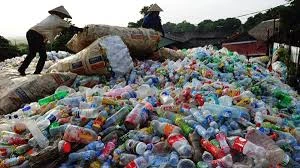
JOURNALIST: - Waste treatment is a hot topic recently as it is hard to find investors for this area, especially in some big cities. What do you think about this issue?
NGUYEN QUANG HUAN: - The reasons why most provinces are confused and unable to find investors in this area is because of lack of standards in choosing investors. The standards for high-tech waste treatment technologies are new in Vietnam. The issues arising are also caused by complications and duplication in functions within some government offices and ministries.
For example, our company and other 15 investors summited documents three years ago to construct high-tech waste treatment plants in Da Nang City. However, until now the proposals are still lying on their desks, even though waste treatment is a serious issue in this province.
According to Natural Resource and Environment Office of Da Nang, this issue is under the management of Science and Technology Office. However, the Science and Technology Office says that waste treatment projects belong to the Planning and Investment Office of the City. Furthermore, the Planning and Investment Office response is that this is a new area and the office does not have any set criteria to choose investors or even approve of such projects.
- How are the new technologies different from the old technologies in waste treatment?
- The outstanding advantage of new technology is that after processing the solid waste by combustion technology, the residue rate is very small. Usually, the residue waste is buried after treatment. In the old technology, this rate is 30%, meaning that for every 100 tons of waste treated, there would be 30 tons of solid residue needing to be buried. For medium technology, this rate is about 15%. However, if applying the INTEC-TCP technology of Germany that we are using, the ratio of solid residue is only 2%.
Furthermore, this technology will not emit any polluted gases into the environment. The process to treat the garbage is also very quick. The garbage disposal will be treated continuously and gradually, and also help reduce waste water leakage.
Moreover, the new technology will not consume much external electricity. The plant will produce electricity from waste to operate the plant. The excess electricity from the plant can also be distributed through the national electricity grid. The estimated capacity is about 200mn kwh/year given the garbage amount of 1,100m3.
Lastly, with this new technology, the garbage classification at the initial source is not needed. The organic waste will be turned to gases to produce electricity and coke, which is then used in metallurgy and cement industries.
- What do you think about the potential for electricity from these new waste treatment plants which are currently considered the most attractive points by investors?
- Currently, Vietnam generates about 28mn tons of garbage per year, in which 76% of this is treated at landfills. Creating electricity from solid waste does not only help deal with waste problems but will also help increase the electricity supply to about 1bn kwh/year by 2020 and 6bn kwh/year by 2050.
The potential from solar power and wind power is much higher than electricity potential from waste treatment plant. However, the benefit of producing electricity from garbage is much bigger. It does not only help produce more electricity but also helps treat the huge waste of the cities.
- How much does a new waste treatment plant cost?
- To treat 1,000 tons of garbage per year we need a plant with capital of USD 250mn, in which tools and machinery will constitute 70-80% of investment capital. The land area needed for the plant is about 4 ha. We may need about 10ha by 2020 to build a plant for treating 2,500-3,000 tons of garbage per year. The cost to treat 1 ton of garbage is estimated at USD 21/ton.
The additional earnings of investors will come from electricity sales or metal waste sales. All of these sources of income will be used for operating the plant. According to our calculation, the payback period is about 13 years. The plant will generate profits from the 14th year.
- It seems very hard to find investment capital as this is a new area and banks are hesitant in lending capital for such kinds of projects?
- Honestly speaking, capital is not a worry as I know that many investors from Germany and Luxembourg are ready to invest in these projects. Investment will bring returns and technologies are usually linked with financial investors. Currently, some financial investors are willing to fund these projects at a low interest rate of 1-3%/year. The biggest challenge now is better mechanism and stable policies.
To resolve the problem of waste treatment completely, the government and city authorities have to put in a great deal of effort into realizing its actual implementation. Practically speaking, the management by authorities remains a big problem besides also an existing lack of standards for choosing investors. Some investors have even tried to take advantage and make profits illegally through loopholes in the current laws.
Although investors are willing to invest in waste treatment plants, the province authorities also need to be completely transparent and serious about implementing such projects for long term benefits.
- Thank you very much.




















